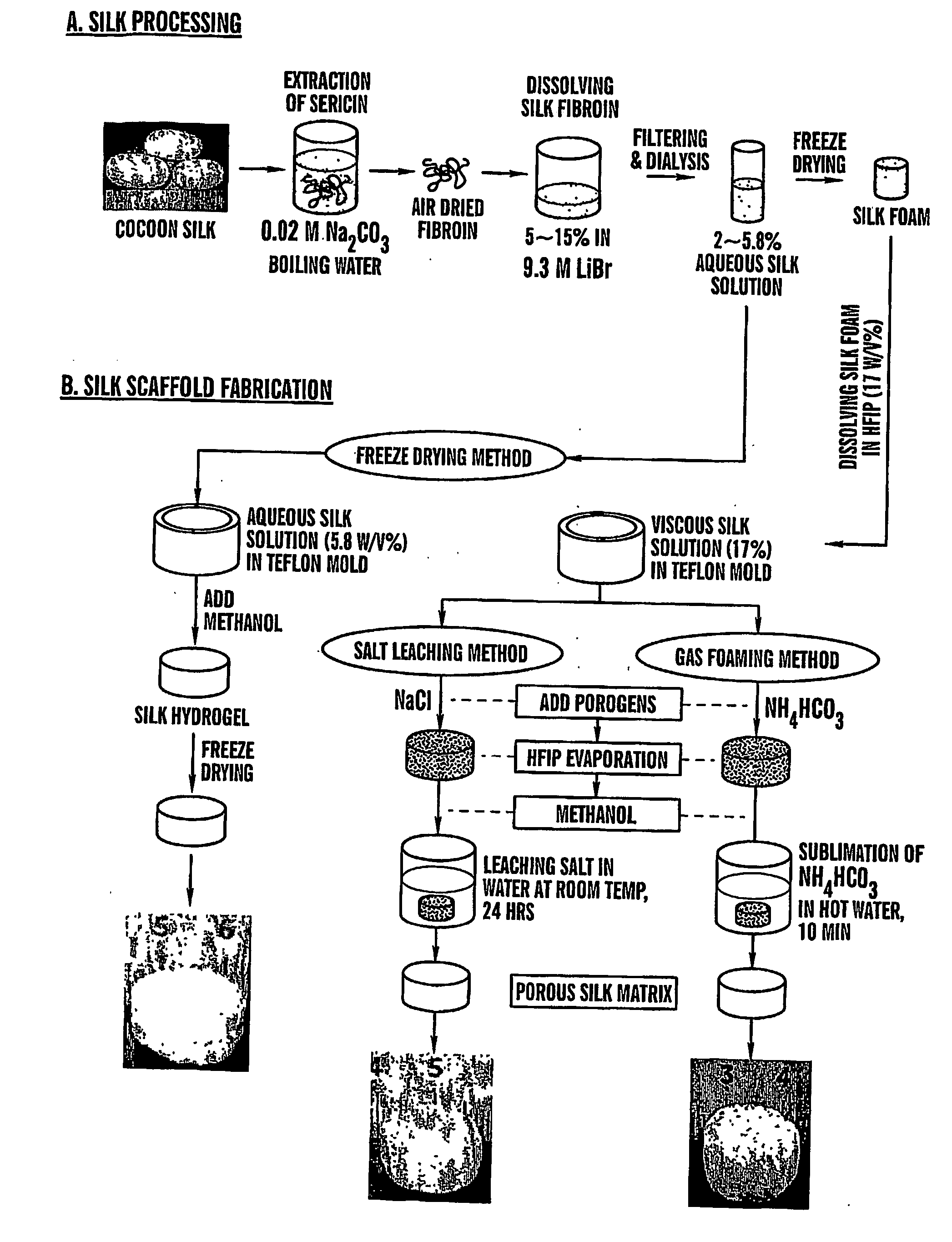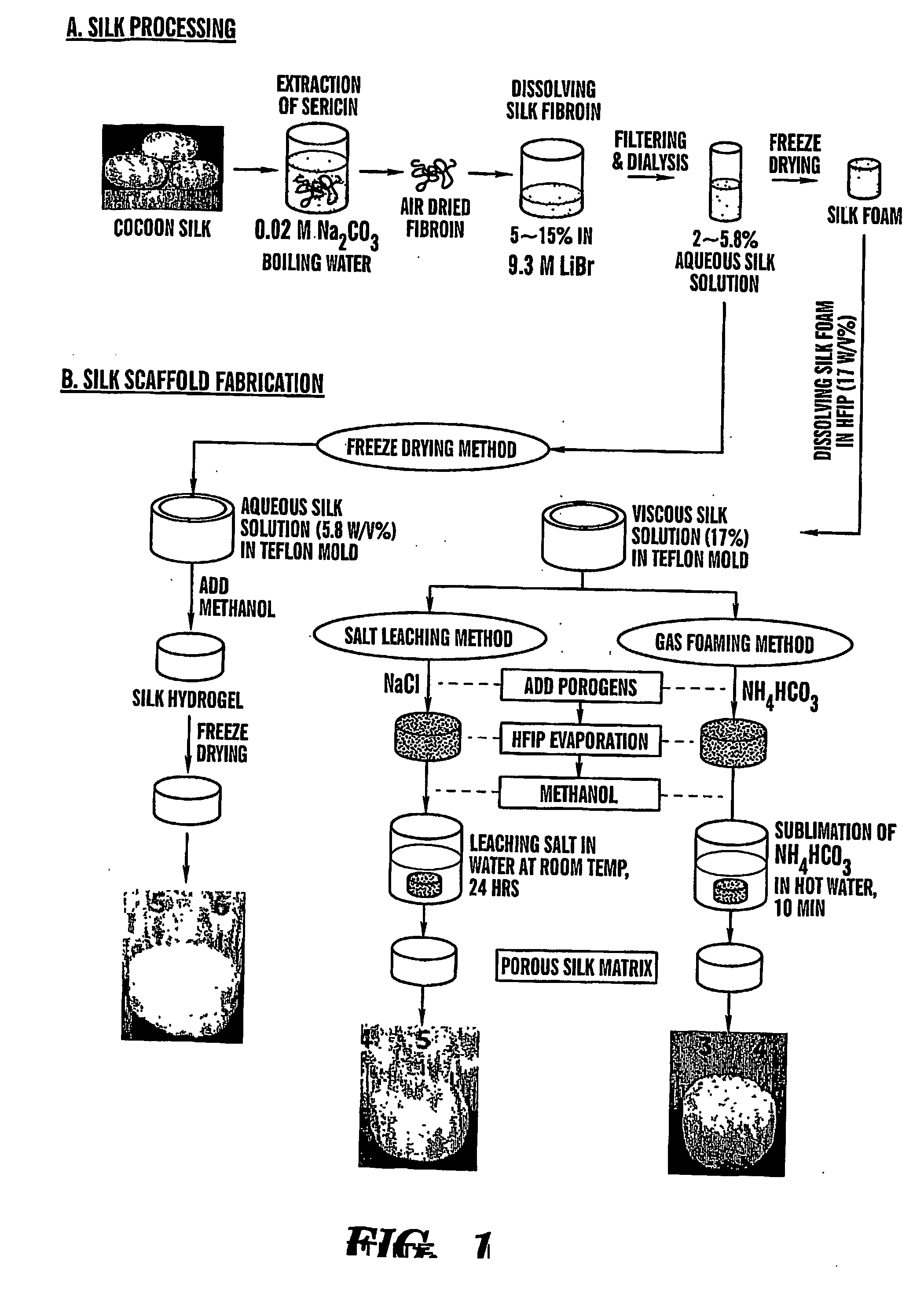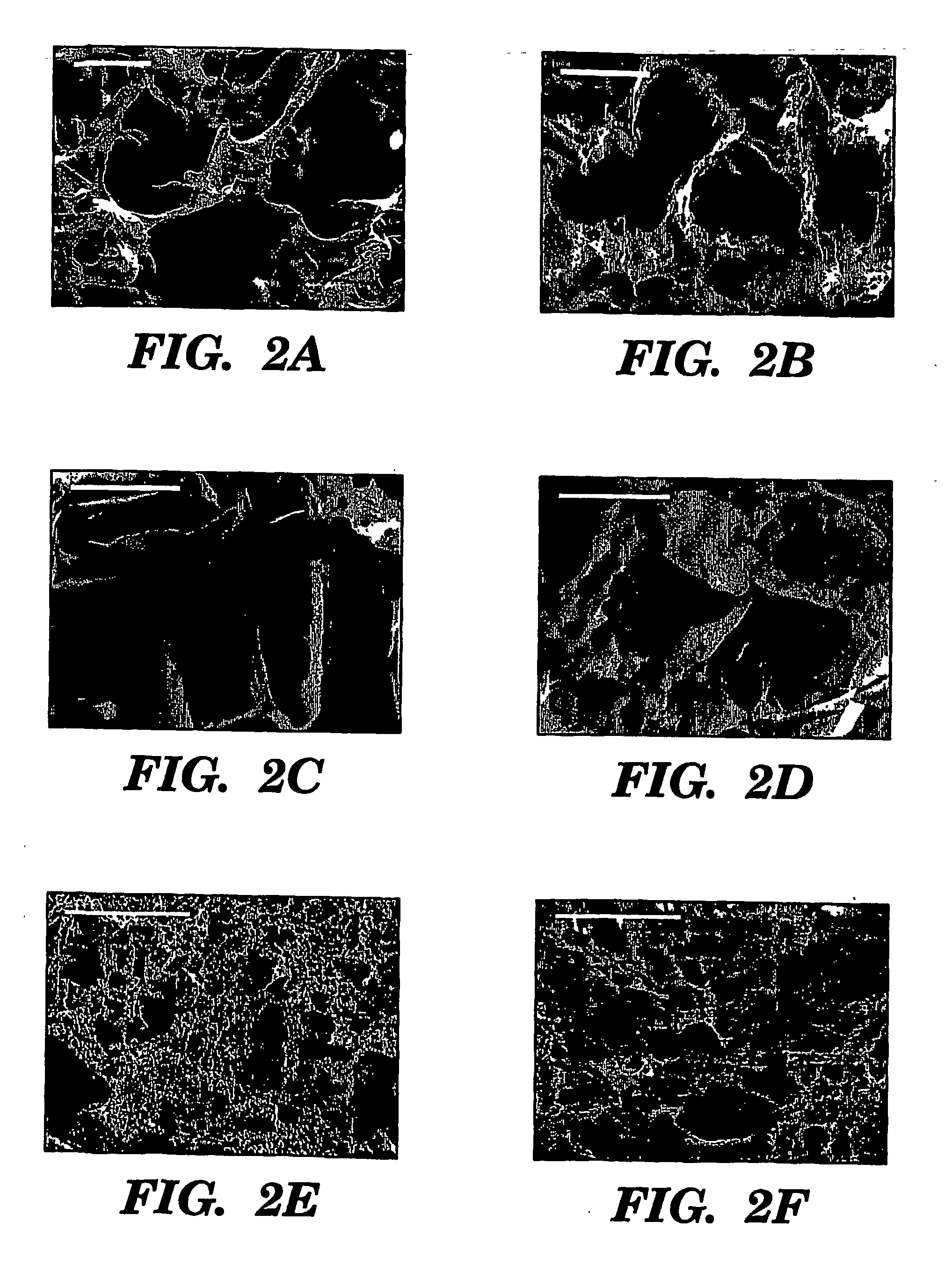Electrospun pharmaceutical compositions
a technology of electronic packaging and pharmaceutical compositions, which is applied in the direction of peptide/protein ingredients, other chemical processes, prosthesis, etc., can solve the problems of inconsistent hydrolysis rate and tissue response profiles, inability to reproduce, and inability to induce inflammation of plga, so as to enhance proliferation and/or differentiation
- Summary
- Abstract
- Description
- Claims
- Application Information
AI Technical Summary
Benefits of technology
Problems solved by technology
Method used
Image
Examples
example i
Preparation of Scaffolds
[0097] Three fabrication techniques; freeze-drying, salt leaching and gas foaming, were used to form porous three-dimensional silk biomaterial matrices. Matrices were characterized for morphological and functional properties related to processing method and conditions. The porosity of the salt leached scaffolds varied between 84-98% with a compressive strength up to 175±3 KPa and the gas foamed scaffolds had porosities of 87-97% and compressive strength up to 280±4 KPa. The freeze-dried scaffolds were prepared at different freezing temperatures (−80 and −20° C.), and subsequently treated with different concentrations (15 and 25%) and hydrophilicity alcohols. The porosity of these scaffolds was up to 99% and the maximum compressive strength was 30±2 KPa. Changes in silk fibroin structure during processing to form the 3D matrices was determined by FT-IR and XrD. The salt leached and gas foaming techniques produced scaffolds with a useful combination of high co...
example ii
Engineering of 3-Dimensional Cartilage Tissue Materials
[0126] Bovine serum, RPMI 1640 medium, Dulbecco's Modified Eagle Medium medium, basic fibroblast growth factor (bFGF), transforming growth factor-β1 (TGF-β1), Pen-Strep, Fungizone, non essential amino acids, trypsin were from Gibco (Carlsbad, Calif.). Ascorbic acid phosphate, Histopaque-1077, insulin, and dexamethasone were from Sigma (St. Lois, Mo.). Collagen scaffolds (Ultrafoam) were from Davol (Cranston, RI). All other substances were of analytical or pharmaceutical grade and obtained from Sigma. Silkworm cocoons were kindly supplied by M. Tsukada, Institute of Sericulture, Tsukuba, Japan, and Marion Goldsmith, University of Rhode Island).
Scaffold Preparation and Decoration
[0127] Cocoons from Bombyx Mori were boiled for 1 hour in an aqueous solution of 0.02M Na2CO3, and rinsed with water to extract sericins. Purified silk was solubilized in 9M LiBr solution and dialyzed (Pierce, MWCO 2000 g / mol) against PBS for 1 day and...
example iii
Engineering of 3-Dimensional Bone Tissue Materials
[0154] Bovine serum, RPMI 1640 medium, Dulbecco's Modified Eagle Medium (DMEM), basic fibroblast growth factor (bFGF), transforming growth factors-β1 (TGF-β1) (R&D Systems, Minneapolis, Minn.), Pen-Strep, Fungizone, non essential amino acids, trypsin were from Gibco (Carlsbad, Calif.). Ascorbic acid phosphate, Histopaque-1077, insulin, dexamethasone, β-glycerolphosphate were from Sigma (St. Lois, Mo.). Collagen scaffolds (Ultrafoam) were from Davol (Cranston, R.I.). All other substances were of analytical or pharmaceutical grade and obtained from Sigma. Silkworm cocoons were kindly supplied by M. Tsukada (Institute of Sericulture, Tsukuba, Japan) and Marion Goldsmith (University of Rhode Island, Cranston, R.I.).
Scaffold Preparation and Decoration
[0155] Cocoons from Bombyx Mori (Linne, 1758) were boiled for 1 hour in an aqueous solution of 0.02M Na2CO3, and rinsed with water to extract sericins. Purified silk was solubilized in 9M...
PUM
| Property | Measurement | Unit |
|---|---|---|
| Percent by mass | aaaaa | aaaaa |
| Diameter | aaaaa | aaaaa |
| Diameter | aaaaa | aaaaa |
Abstract
Description
Claims
Application Information
 Login to View More
Login to View More - R&D
- Intellectual Property
- Life Sciences
- Materials
- Tech Scout
- Unparalleled Data Quality
- Higher Quality Content
- 60% Fewer Hallucinations
Browse by: Latest US Patents, China's latest patents, Technical Efficacy Thesaurus, Application Domain, Technology Topic, Popular Technical Reports.
© 2025 PatSnap. All rights reserved.Legal|Privacy policy|Modern Slavery Act Transparency Statement|Sitemap|About US| Contact US: help@patsnap.com



